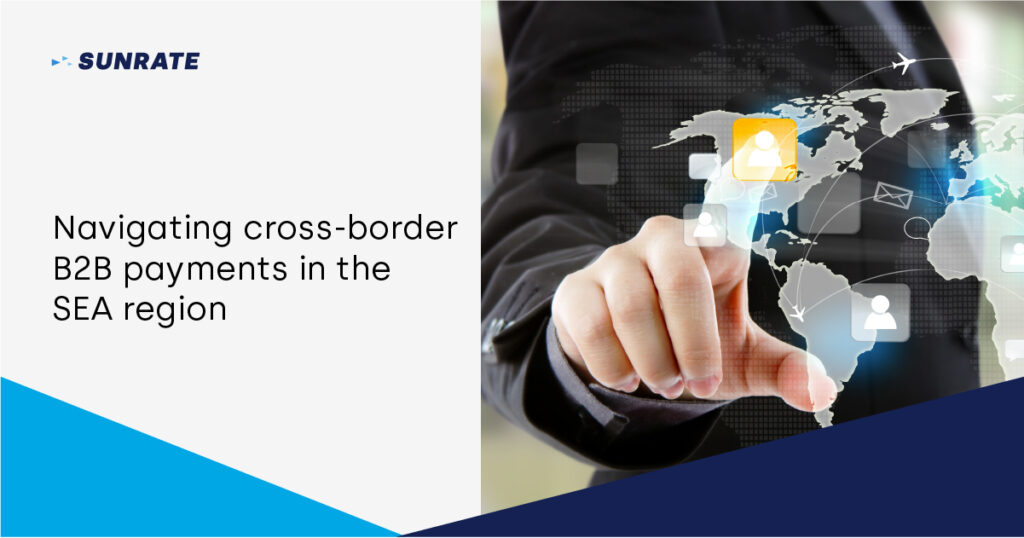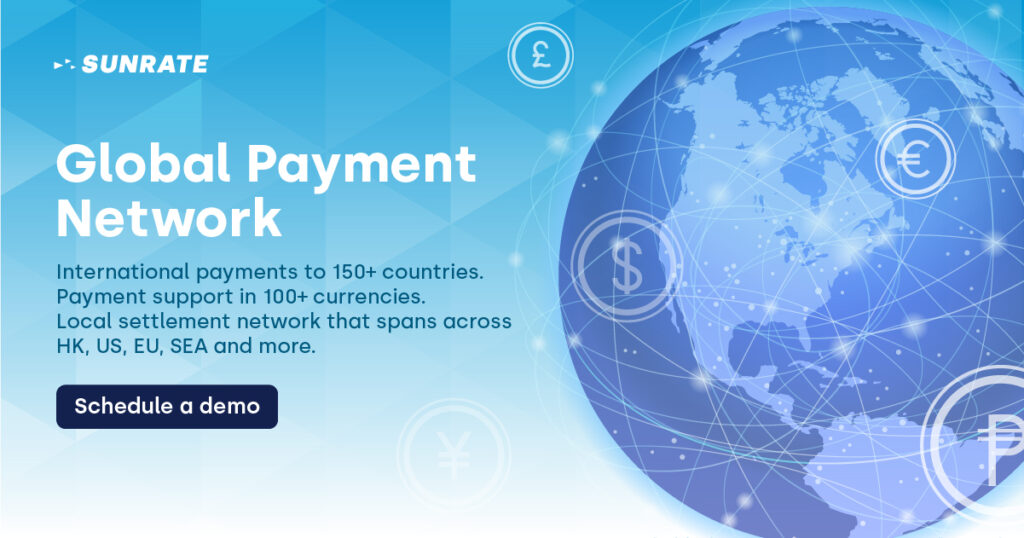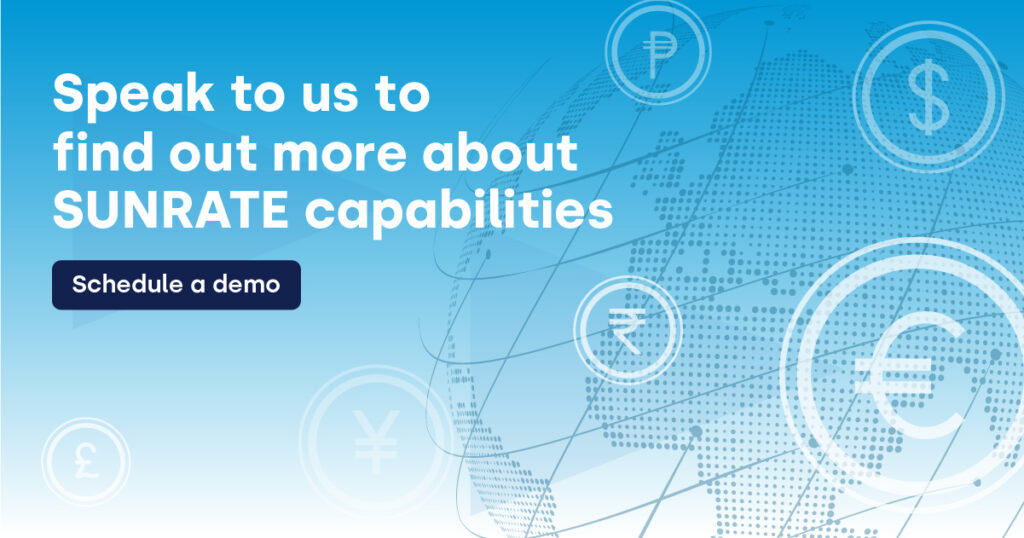

As businesses continue to expand globally, the need for efficient and secure cross-border payment solutions has become increasingly important. However, the cross-border B2B payments landscape in the Southeast Asia (SEA) region can be complex and challenging due to the region's diverse regulatory environment, foreign exchange rates, and payment methods.
Despite these challenges, businesses that operate in the SEA region cannot afford to overlook cross-border payments. As they expand their global reach and seek to remain competitive, businesses need to navigate the complexities of cross-border payments to efficiently and securely transfer funds across borders.
In this article, we will explore the unique challenges of navigating cross-border B2B payments in the SEA region and provide practical tips for businesses looking to optimise their payment processes and mitigate risks.

Explanation of B2B cross-border payments
Cross-border B2B payments refer to the transfer of funds between businesses in different countries or regions. These payments can be made in different currencies and involve multiple intermediaries, including banks, payment service providers, and liquidity providers. The process can be complex and costly due to factors such as currency conversion, regulatory requirements, and compliance with anti-money laundering (AML) laws.
In the SEA region, cross-border B2B payments can be particularly challenging due to the diversity of regulations and payment methods across the different countries. For example, some countries may require additional documentation or impose restrictions on certain payment methods, which can impact the speed and cost of transactions.
Efficient and secure payment solutions are essential for businesses looking to expand their global reach and remain competitive in the global marketplace. By understanding the regulatory environment, choosing the right payment method, and mitigating risks, businesses can successfully navigate the complexities of cross-border B2B payments in the SEA region.
Overview of the SEA region’s market and its unique challenges
The SEA region is a diverse and rapidly growing market for cross-border B2B payments. The region includes countries such as Indonesia, Thailand, Philippines and many others, which have their own unique set of challenges for businesses looking to make cross-border payments. One of the challenges in the SEA region is the diversity of payment methods used across different countries. For instance, some countries may prefer cash-based transactions, while others may prefer digital payments. This can make it difficult for businesses to choose the most efficient and cost-effective payment method for cross-border transactions.
To navigate these challenges, businesses can work with local partners or global brands with strong localisation efforts who have a deep understanding of the market and can provide guidance on the most effective payment methods and compliance requirements. Additionally, businesses can leverage technology such as digital payment platforms to streamline the payment process and reduce costs.
Understanding the regulatory environment
Navigating the regulatory environment is crucial for businesses looking to make B2B cross-border payments in the SEA region. Each country has its own set of regulations and requirements for cross-border payments, and businesses must comply with these regulations to avoid penalties and legal issues.
One key regulatory consideration is the role of central banks and regulatory bodies in overseeing cross-border payments. In some countries, central banks may require businesses to obtain specific licenses or approvals before making cross-border payments, or they may impose restrictions on the amount of money that can be transferred.
In addition, businesses must consider compliance requirements such as anti-money laundering (AML) and know-your-customer (KYC) regulations. These regulations may require businesses to provide detailed information about the parties involved in the transaction, including their identities, addresses, and business relationships.
Understanding the regulatory environment is critical for businesses looking to make B2B cross-border payments in the SEA region. To navigate this complex landscape, businesses should work with trusted partners who have a deep understanding of the regulatory requirements in each country. These partners can help businesses comply with local laws and regulations, streamline the payment process, and reduce costs.
Overall, businesses should stay informed about the latest regulatory developments and work closely with trusted partners to ensure compliance and minimise the impact of regulatory requirements on their cross-border B2B payments in the SEA region. By doing so, businesses can minimise risks, optimise their payment processes, and unlock new opportunities for growth and success in the region.
Choosing the right payment method
Different payment methods have different advantages and disadvantages, and the right choice will depend on factors such as the transaction amount, foreign exchange rates, and payment processing times.
One common payment method for cross-border B2B payments is bank transfers. Bank transfers can be a reliable and secure way to transfer large amounts of money, but they can also be slow and expensive. Businesses should consider the processing times and fees associated with bank transfers, as well as any currency exchange rates that may apply.
Another payment method to consider is digital payment platforms. Digital payment platforms can offer faster processing times and lower fees than bank transfers, but more often than not, they may have limits on the amount of money that can be transferred at once.
Ultimately, the right payment method will depend on the specific needs of the business and the transaction at hand. Businesses should consider factors such as speed, cost, security, and regulatory compliance when choosing a payment method for B2B cross-border payments in the SEA region. By working with a trusted payment service provider and staying informed about the latest payment technologies and options, businesses can choose the right payment method and optimise their payment processes.
Mitigating risks in cross-border B2B Payments
Cross-border payments can present a number of risks for businesses, including currency fluctuations, fraud, and compliance issues. To mitigate these risks, businesses must take a strategic and proactive approach to managing their cross-border payments.
One key strategy for mitigating risk in cross-border B2B payments is to work with trusted partners who have a deep understanding of the local market and regulatory environment, as well as choosing the right payment method, as mentioned above.
Businesses should also invest in robust fraud prevention measures, such as multi-factor authentication and encryption, to protect against cyberattacks and other forms of fraud. Additionally, businesses should regularly monitor their payment activity and maintain detailed records to detect and address any potential issues or irregularities.
Overall, mitigating risk in cross-border B2B payments requires a comprehensive approach that combines careful planning, strategic partnerships, and advanced fraud prevention measures. By taking these steps, businesses can minimise the impact of risk on their payment processes and optimise their cross-border payment strategies for success in the SEA region.
Future trends in cross-border B2B payments in the SEA region
The cross-border B2B payment landscape is rapidly evolving, with new technologies and trends emerging that are poised to transform the way businesses operate in the SEA region. Here are some of the key future trends to watch:
1. Real-Time Payments:
Real-time payments are becoming increasingly popular, allowing businesses to send and receive payments instantly, around the clock. This can help to streamline payment processes and reduce the risk of fraud, while also providing greater convenience for customers and suppliers.
2. Digital Wallets:
Digital wallets are gaining popularity in the SEA region, with more businesses and consumers using these platforms to conduct transactions. These payment methods offer greater flexibility and convenience, allowing businesses to transact with customers and suppliers in new and innovative ways.
3. Artificial Intelligence (AI) and Machine Learning (ML):
AI and ML are increasingly being used in the payment industry to enhance fraud detection, automate payment processes, and provide real-time insights into payment trends and patterns. These technologies can help businesses optimise their payment processes and reduce the risk of fraud and errors.
Overall, businesses operating in the SEA region should be prepared to adapt to these and other future trends in the cross-border B2B payment space. By staying abreast of the latest developments and leveraging innovative technologies and payment methods, businesses can optimise their payment processes, reduce costs, and improve customer and supplier relationships.
What SUNRATE can do when it comes to cross-border B2B payments
SUNRATE is an intelligent global payment and treasury management platform for businesses worldwide. Since our inception in 2016, we have been recognised as a leading solutions provider and have enabled companies in 150+ countries with our cutting-edge proprietary platform, extensive global network, and robust APIs to scale both local and global growth.
With SUNRATE, you can:

We are licensed and regulated by the Financial Conduct Authority of the UK, the Bank Indonesia, the Hong Kong Customs, and the Monetary Authority of Singapore.
Find out more about how SUNRATE can help your business expand globally via cross-border B2B payments today.

Share to
By clicking Subscribe, you have read and agreed to our《《Privacy and Terms》》

Commercial cards are reshaping the B2B payment landscape, presenting businesses with an exciting opportunity to embrace innovation and drive their financial processes to new heights.


Effortlessly and economically settle payments to your Chinese suppliers. When it comes to making international payments, businesses seek swiftness, simplicity, and affordability. This is especially crucial for transactions involving China, as businesses frequently encounter various obstacles like rigorous declaration procedures, currency restrictions, regulatory compliance, foreign exchange uncertainties, exorbitant fees, and language barriers during administrative […]


In recent decades, China has emerged as a global economic powerhouse, reshaping the dynamics of international trade and becoming a driving force behind the success of numerous businesses worldwide. Even though it is still considered as an emerging market, the sheer scale and potential of China’s market have drawn the attention of entrepreneurs and corporations […]

We hope to use cookies to better understand your use of this website. This will help improve your future experience of accessing this website. For detailed information on the use of cookies and how to revoke or manage your consent, please refer to our < privacy policy >. If you click the confirmation button on the right, you will be deemed to have agreed to use cookies.